- Learning time
- 20 minutes
- First play time
- 80 minutes
Rise of Tribes
Designed by: Brad Brooks
As the name suggests, in Rise of Tribes you oversee the development of your own tribe in the harsh landscape of early man: expanding in numbers and geography, harvesting resources, developing technology – and in a terrible portent of what is to come over the next few thousand years, killing each other.
The board is actually made up of landscape hexes, the number of which varies depending on the amount of players. Everyone starts with four tribespeople on a single hex, and sixteen more to be potentially added. On your turn you take two distinct actions from an available four: Grow sees you add more tribespeople to hexes you control, Move lets you migrate to other parts of the world, Gather allows you to harvest resources (stone, wood, food) depending on the hexes you occupy, and Lead is a kind of cultural advancement of your tribe – you get to flip some objective cards that can be paid for with your resources. Some simply score points; others give you ongoing in-game advantages, such as the Horse to offer advanced movement, or the Bow to take out the enemy.
Ah, the enemy. In Tribes, there’s not a whole lot of room to spread around and you’ll quickly find yourself fighting for space. Tribes hate to share, so at the end of any turn where more than five tribe members occupy the same hex, combat is resolved by everyone involved removing one tribe member at a time until there is only a single tribe left – even a single tribe can’t have more than five tribespeople on a hex and will resort to this brutal culling. At the end of your turn, assuming you have resources to do so, you can pay for any objective cards and/or build villages in hexes under your control. If they haven’t been wiped out by the time your next turn arrives, each village scores a point – which might not sound like much, but the game ends instantly the moment any player reaches the holy grail of fifteen points.
But in case you were thinking it all sounds oh-so-simple, there is also a double catch to how the actions are selected. Each of the four actions has a row of three dice on it showing moon symbols, sun symbols, or a blank side. On your turn you roll two extra dice and, in choosing an action, push one of your dice into the chosen row from the left, shoving the right-most die out of the row (which will now become a spare for the next player to roll). If the dice left have a double-moon in the row, your action on this turn will be less effective than the default action. If it has two suns, it’ll be more effective. So what action you choose when isn’t just about what best suits you, but what die faces are showing in the actions themselves and what juicy turns you might be leaving for the player coming after you.
The second catch is that if you roll a double – two suns, moons, or blanks – an Event is triggered. These might be beneficial to you as well, or introduce some extra element to the board, such as a volcano or a woolly mammoth that can be hunted or tamed.
That in a nutshell, is Rise of Tribes – except once you’ve played the basic game you’ll find there’s a heap of extra stuff to add to the mix if you want it, from additional landscape tiles to asymmetrical Tribe abilities. There’s a lot here to explore.
Joe says
A succinct, characterful area control game with beautiful wooden bits and a ton of options in the form of add-on modules, if that's your thing. It's not mine, but I found the basic game fun and interesting in its own right.
The guru's verdict
-
Take That!
Take That!
It might start gently, but Rise of Tribes evolves into a combative free-for-all where any one tribe starting to look dominant will be cut down to size.
-
Fidget Factor!
Fidget Factor!
As with most games, players play at different speeds and there might be the occasional lull whilst you or someone else considers what their best move might be. But on the whole, things move along pretty handily.
-
Brain Burn!
Brain Burn!
It's a juggle of the board state, your objective cards and the options you'll both take and leave behind.
-
Again Again!
Again Again!
The box contains a lot of variety but even the basic game, described above, can play out in different ways. It's no weighty, elegant, civilisation builder, but player decisions are key and, usually lasting under an hour, Tribes can't be accused of over-staying its welcome.



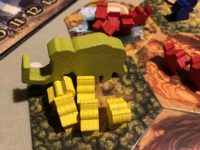
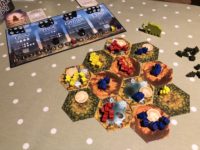



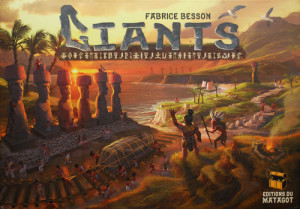

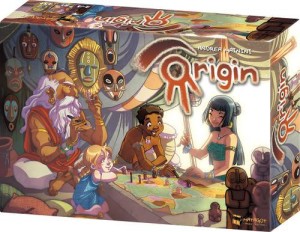

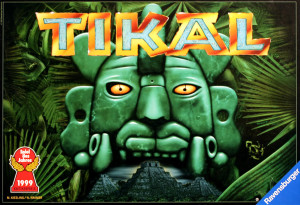
Sam says
What saves Rise of Tribes from being just yet-another civilisation-building, resource-converting game in a hobby saturated with both is both the highly-combative element and the comparative brevity. There are a zillion games where hexes are laid out, stuff is harvested and turned into something else (usually points) but often player interaction is pretty minimal, and after a couple of plays the sheen of them can wear off. Although Rise of Tribes hasn't marched into my favourite games list I do like it for the above reasons - it can be brutal, but hey - primitive times were brutal on occasion, and the high level of skirmishing and interaction here combined with the reasonably light rules mean Rise of Tribes is a hit for the right group of gamers - to be specific, those that don't mind a bloodied nose along with their gentle resource-management.